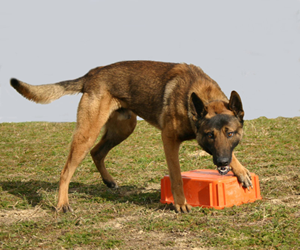Although different forms of dog aggression have been identified and neatly categorized below, the reality is dog aggression is not so neatly segregated. It is rare to see a dog with only one type of dog aggression, and an aggressive dog may also have other behavior problems. This can sometimes complicate the diagnosis and treatment. [1].
But more important than understanding the types of dog aggression is in understanding exactly what the dog’s triggers are, in other words, what sort of things cause him or her to react aggressively or to become anxious. What are the sequence of events and circumstances that occur before the dog becomes aggressive? Keeping detailed records may start to reveal a pattern. Here are some more common types of dog aggression:
- Owner Directed or “Dominance” Aggression
- Fear Aggression
- Territorial/Protective Aggression
- Dog-on-Dog Aggression—Related to Dominance
- Dog-on-Dog Aggression— Related to Pack (Sibling)
- Dog-on-Dog Aggression—Related to Fear
- Predatory Aggression
- Possessive Aggression
- Aggression Towards Babies or Children
- Redirected Aggression
- Food-Related Aggression
- Play Aggression
- Maternal Aggression
- Health Related Aggression (general)
- Seizure Related Aggression
- Aggression Influenced by Medications
You might be interested in
Can dog aggression be cured?
Keep a dog from biting
Treating dog aggression
References
[1]Special report, Cornell University College of Veterinary Medicine Animal Health Newsletter by Cornell University College of Veterinary Medicine Animal Health Newsletter 53 Park Place, new York, NY 10007


